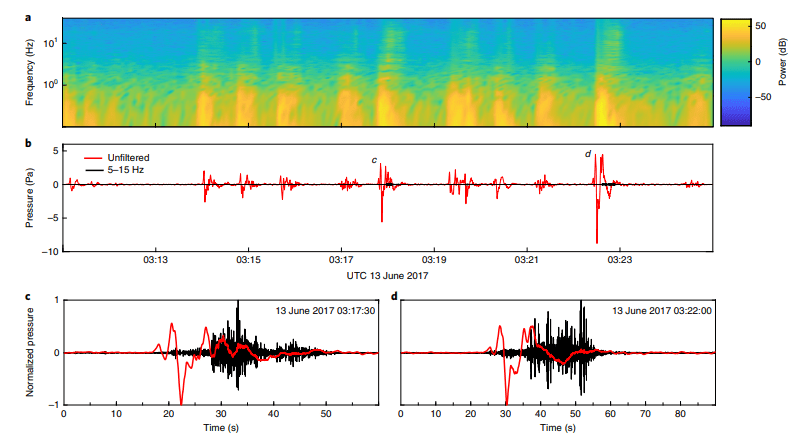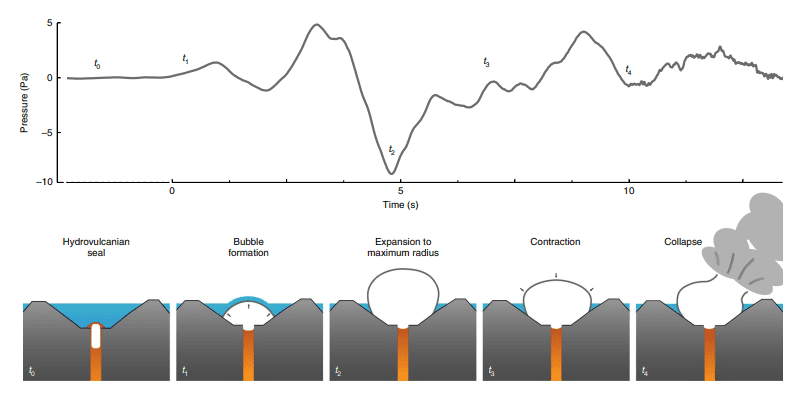An underwater volcano off the coast of Alaska has erupted more than 70 times over 9 months, producing a distinctive grumble before each eruption. The volcano also belched ungodly large gas bubbles.

Shallow submarine volcanoes are difficult to study as they are often remote; this can make data acquisition difficult and costly. The interaction between magma and surface water is also complex. It can create violent explosions, but because these interactions are so inaccessible, researchers don’t really understand the entire process. Furthermore, these explosions can also pose risks to nearby ships and planes.
To better understand these processes, researchers installed low-frequency microphones around the Bogoslof volcano to better study this interaction — of course, they couldn’t install the microphones right next to the volcano, so they installed them 59 kilometers to the south.

The volcano has been known for a long time. Its peak forms Bogoslof Island, an uninhabited island that barely rises above the water surface (but which hosts a thriving seal colony). The first known emergence of the island above sea level was recorded during an underwater eruption in 1796, and since then, the volcano has been steadily adding more surface to the island through new eruptions. The volcano’s eruptive belches have also been documented.
In July 1908, a medium-sized cutter called Albatross was cruising around the island when the sea began to swell. The account of this event reports that the sea bulged and bulged until it ruptured, releasing a terrifying plume of gas and steam. It was a dazzling display that few humans have witnessed, and it’s exactly what researchers wanted to study with the microphones: how big do these bubbles really get?

Shallow submerged explosions are often described as beginning with a swelling of the water surface, but these descriptions are qualitative in nature (“giant”, “huge”), not quantitative; researchers wanted to put some numbers on those adjectives but obviously, hanging around a volcano and waiting for it to erupt is not exactly a safe idea. Previous research has shown that smaller bubbles produce infrasound when they oscillate, and their size can be calculated based on these oscillations. This is where the microphones kicked in — they picked up the infrasound and based on this, enabled the researchers to calculate how big the bubbles were without actually seeing them.
You can actually hear the bubbles below. The audio has been adjusted for human ears and sped up 300x. Each of the spikes is a signal from a separate bubble.
According to the calculations, volcanic bubbles reached up to 750 feet (228 meters) across, with a volume of over 180 million cubic feet (5 million cubic meters) of gas. The size of the bubble depended on the radius of the crater and the depth at which the bubbles form.
“The range of initial bubble radii thus varies from the vent radius, 25m, to 200m, or slightly smaller than the approximate radius of the crater area around the time of the observed signals. In our model, large bubbles most probably formed at or near the vent in the base of the shallow submerged crater and thus the height of the submerged portion of the bubble is controlled by the depth of the water,” the study concludes.
The study has been published in Nature Geoscience.


